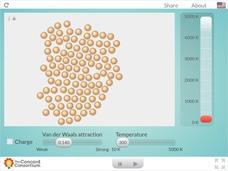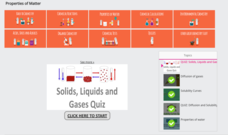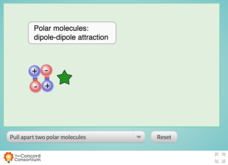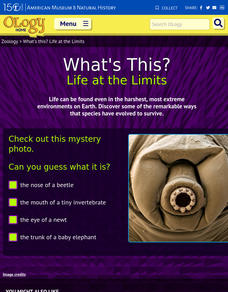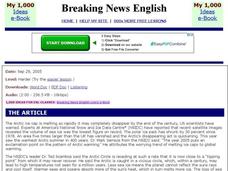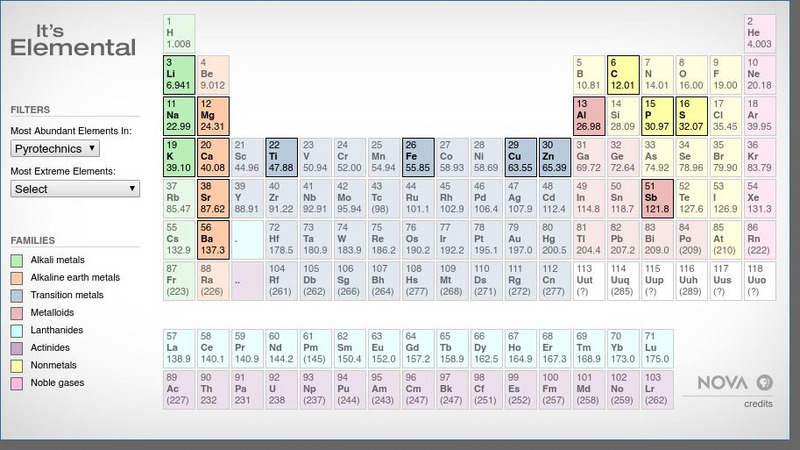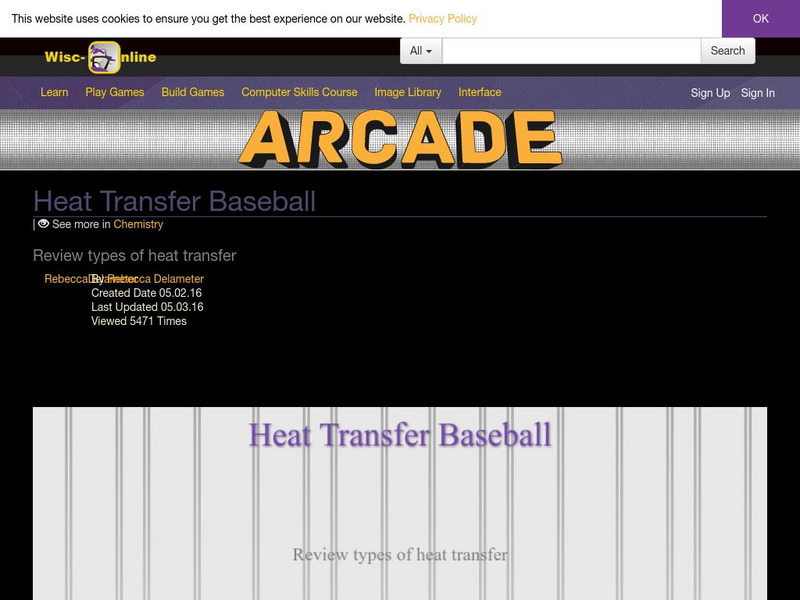Concord Consortium
Charged and Neutral Atoms
Do charged and neutral particles behave differently as they undergo phase changes? Science sleuths examine two types of attractive forces using an informative interactive. Pupils can vary the amount of Van der Waals attraction present...
Concord Consortium
Seeing Specific Heat and Latent Heat
What happens inside a melting solid? Prospective physical chemists observe a solid-to-liquid phase change at the molecular level using an inspired interactive. Pupils add heat to a close system, then monitor changes in kinetic and...
Concord Consortium
Specific Heat and Latent Heat in Condensation
There's more to melting than meets the eye! Junior physical chemists investigate the differences between specific and latent heats as a substance undergoes a phase change. Users remove heat from the system and observe changes in kinetic...
Royal Society of Chemistry
Symbols
Chemistry calculations can look a bit like alphabet soup at times. How do you help pupils make sense of it all? An interactive resource helps scholars sort through the symbols for common quantities such as moles, boiling point, and...
Fuse School
Quiz: Solids, Liquids and Gases
Time to show what they know! Module five in a 14-part series about solids, liquids, and gases redirects to an interactive quiz. Learners test their skills on topics such as states of matter, phase changes, and Brownian Motion. With...
CK-12 Foundation
Don't Slip
Salt is the go-to material when people need to melt ice—learn the chemistry behind its effectiveness with an interactive lesson. Pupils watch a short narrative and then explore the concept through a simulation. Young scientists...
CK-12 Foundation
It's Just a Phase
Explore the phases of water as temperature rises. Pupils consider the idea that temperature remains constant during each phase change. An interactive exercise allows your young scientists to observe the temperature and molecular...
Royal Society of Chemistry
Alloys
What are alloys, and why do we use them? Through a series of interactive puzzles, scholars examine the components and uses of several common alloys. The accompanying teacher's resources provide support in using the lesson, printable...
Concord Consortium
Comparing Dipole-Dipole to London Dispersion
Which intermolecular force is the strongest? Scholars test the relative strength of London dispersion forces, dipole-dipole interactions, and induced dipoles using a simulator. The interactive allows learners to pull on paired molecules...
Jefferson Lab
The Periodic Table of Elements
A study of the periodic table of elements doesn't have to be elementary! Deepen understanding of the building blocks of chemistry with an interactive periodic table. At first sight, the table looks like a standard reference page, but a...
Curated OER
Easily Confused Words: Lead and Led
Although not quite as confusing as their, they're, and there, many people have difficulty with lead, lead (the toxic metallic), and led. Review these basic sentences with your third and fourth graders, and have them complete the...
Curated OER
Comparing Covalent and Ionic Substances
In this covalent and ionic substances worksheet, students use the internet to find information about the characteristics of covalent and ionic substance and explain what causes the differences in these types of substances.
American Museum of Natural History
What's This? Life at the Limits
There are some amazing ways species evolve to survive. From large ears to sneezing salt, learners read about these interesting adaptations in an interactive lesson. Great to supplement an in-class lesson, it also works well as a remote...
Curated OER
Breaking News English: Global Warming
For this Global Warming worksheet, students read the article, answer true and false questions, complete synonym matching, complete phrase matching, complete a gap fill, answer short answer questions, answer discussion questions, write,...
Curated OER
Participial Adjectives 2 -ed/-ing
In this participial adjectives worksheet, students choose the correct way to complete the sentences with adjectives either ending in -ed or -ing. Students complete 16 sentences.
Curated OER
Test on Simple Past Tense
In this simple past tense worksheet, students write the past tense forms of irregular verbs, complete tables and sentences in simple past and fill in blanks using 'was' or 'were.' Answers may be submitted online. ESL appropriate but not...
Other
Science Alive: Melting Point Simulation
Percy Julian and Josef Pikl used the fact that melting point-the temperature at which a substance changes from a solid to a liquid-is a characteristic property of a substance to prove that the British chemist Robert Robinson could not...
CK-12 Foundation
Ck 12: Chemistry Simulation: Salty Roads
[Free Registration/Login Required] Explore how solutes can keep roads clear of ice in the winter by learning how different types and concentrations of a solute affect the freezing point of a solution.
PBS
Pbs Learning Media: Melting and Boiling Simulation
Observe the motion and temperature of water molecules in this simulation as heat is applied to a beaker containing an ice cube.
PBS
Pbs: Nova: Interactive: It's Elemental
Periodic table of elements, color-coded by family type. Elements are highlighted based on prevalence in human body, in sun, etc., or by density, boiling point, or melting point.
PBS
Pbs Learning Media: Matter's Physical Properties: Interactive Lesson
In this interactive lesson, learn what the "physical properties" of matter are and how can they be measured and observed.
Wisc-Online
Wisc Online: Chemistry: Heat Transfer
Answer the thermal energy transfer questions correctly, and advance around the baseball diamond.
